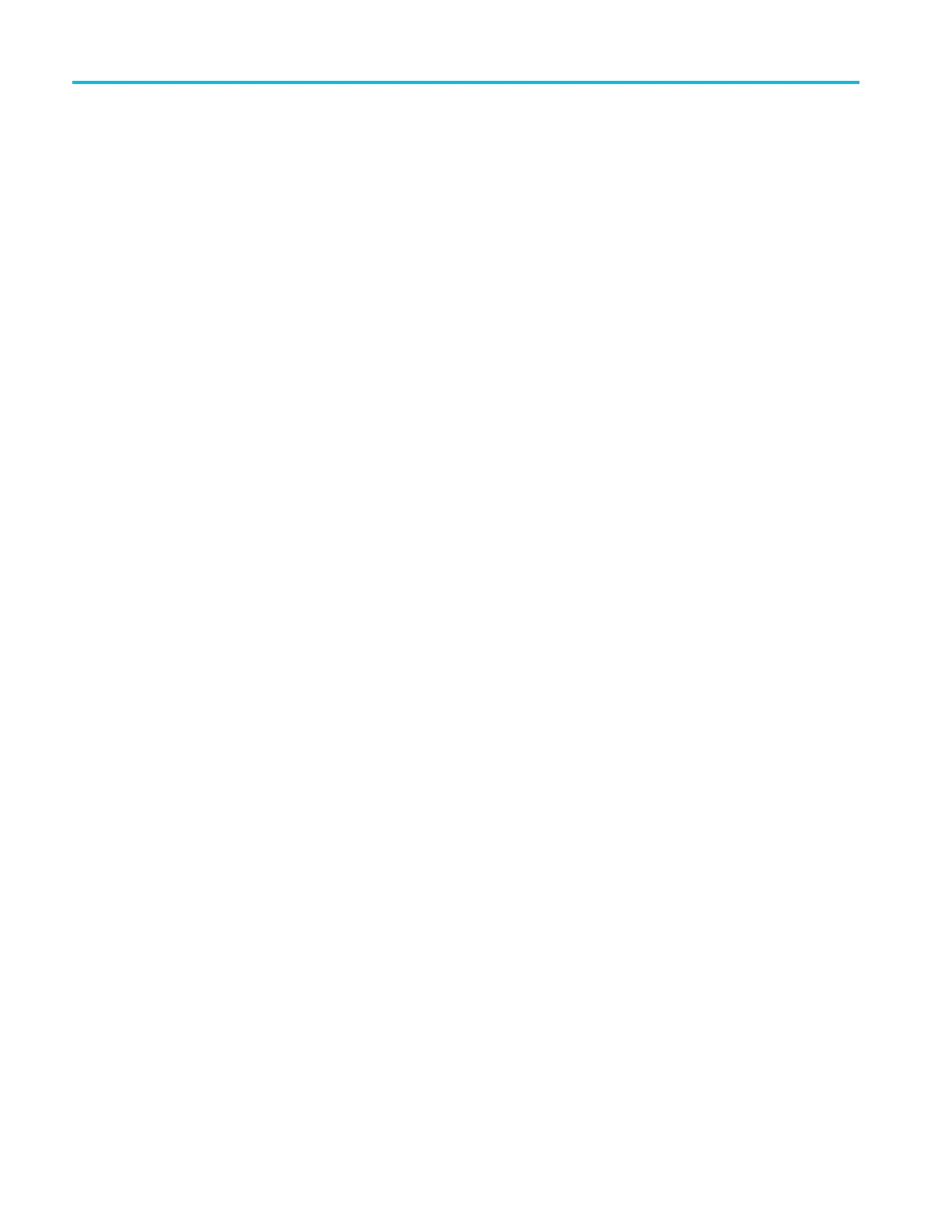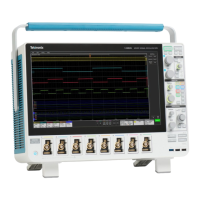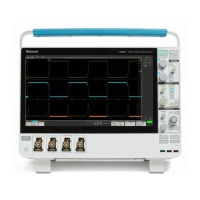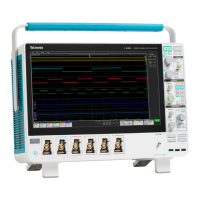Commands listed in alphabetical order
Syntax
MEASUrement:C
H<x>:REFLevels:ABSolute:TYPE {SAME|UNIQu e}
MEASUrement:CH<x>:REFLeve ls:ABSolute:TYPE?
Arguments
SAME specifies that the absolute reference levels for the specified measurement
channel are the same.
UNIQue specifies that the absolute reference levels for the specified measurement
channel are not the same.
Examples
MEASUREMENT:CH2:REFLEVELS :ABSOLUTE:TYPE SAME set the reference
levels to be the same.
MEASUREMENT:CH2:REFLEVELS :ABSOLUTE:TYPE? might return
:MEASUREMENT:CH2:REFLEVEL S:ABSOLUTE:TYPE SAME indicating that the
reference levels for absolute measurements are the same.
MEASUrement:CH<x>:REFLevels:BASETop
This command sets o r queries the method used to calculate the TOP and BASE,
used to calculate reference levels for the measurement. The channel number
is specified by x.
Group
Measurement
Syntax
MEASUrement:CH<x>:REFLeve ls:BASETop
{AUTO|MINMax|MEANhistogra m| MODEhistogram|EYEhistogra m}
MEASUrement:CH<x>:REFLeve ls:BASETop?
Arguments
AUTO automatically chooses a reference level method.
MINMax specifies that reference levels a re relative to the measurement MIN and
MAX.
MEANhistogram specifies that reference levels are relative to the histogram mean
BASE and TOP.
MODEhistogram specifies that reference levels are relative to the histogram mode
BASE and TOP.
EYEhistogram specifies that reverence levels are relative to the eye histogram
BASE and TOP.
Examples
MEASUREMENT:CH2:REFLEVELS :BASETOP MINMAX specifies that reference
levels are relative to the measurement MIN and MAX.
2-386 MSO54, MSO56, MSO58, MSO58LP Programmer

